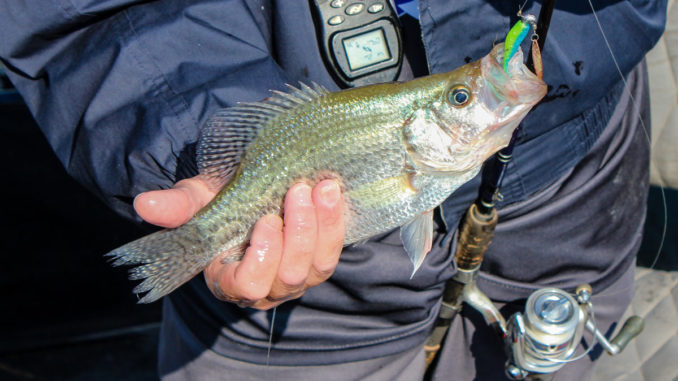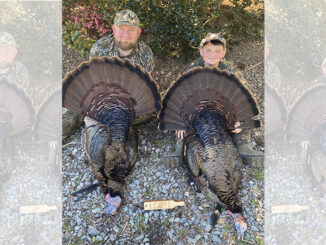
Ask guide Eddie Moody what the difference is between a long-liner and a tight-liner, he’ll quickly tell you that a tight-liner is more of a finesse or presentation fisherman, while a long-liner is putting his money on a reaction strike. As a long-liner, Moody ups the ante by rigging half of his offerings with bladed jigs to cause a forced feed.
Bladed jigs offer several features that are attractive to fish, whether in a feeding mood or not. The vibration from the blade mimics the distress of a wounded baitfish, triggering the attack instinct. Also, the flash of the blade simulates the scales and flaring gills of baitfish. And, like spinnerbaits for bass, anglers have a number of options.
“Fish react differently to different vibrations. I would use a Colorado blade for more active fish in the early fall,” said Moody. “But when the water temperature is dropping, I’ll usually run a willow blade. That’s when you want to start downsizing everything because the fish’s metabolism drops. The color is also important. I’ll use a bronze or gold color on a cloudy day and a chrome color on a bright, sunny day.
“I’ll run about half of my rods with regular jigs and half with bladed jigs and mix the blades up until the fish tell me what they want,” he said. “Also, the bladed jigs will run a little deeper, which gives you another variation in the water column. Sometimes I wonder if a jig is getting a strike because it has a blade or if it’s because it’s running 6 inches deeper than the others.”
The Road Runner is the most-popular of the bladed jig line, but rather than be limited, Moody pours his own with a “horse head” jig mold from the Do-It Molds Store.





Be the first to comment